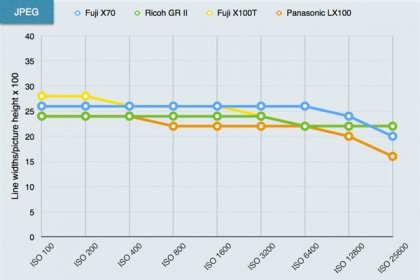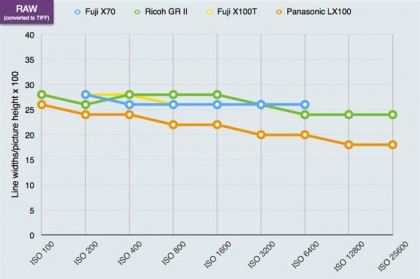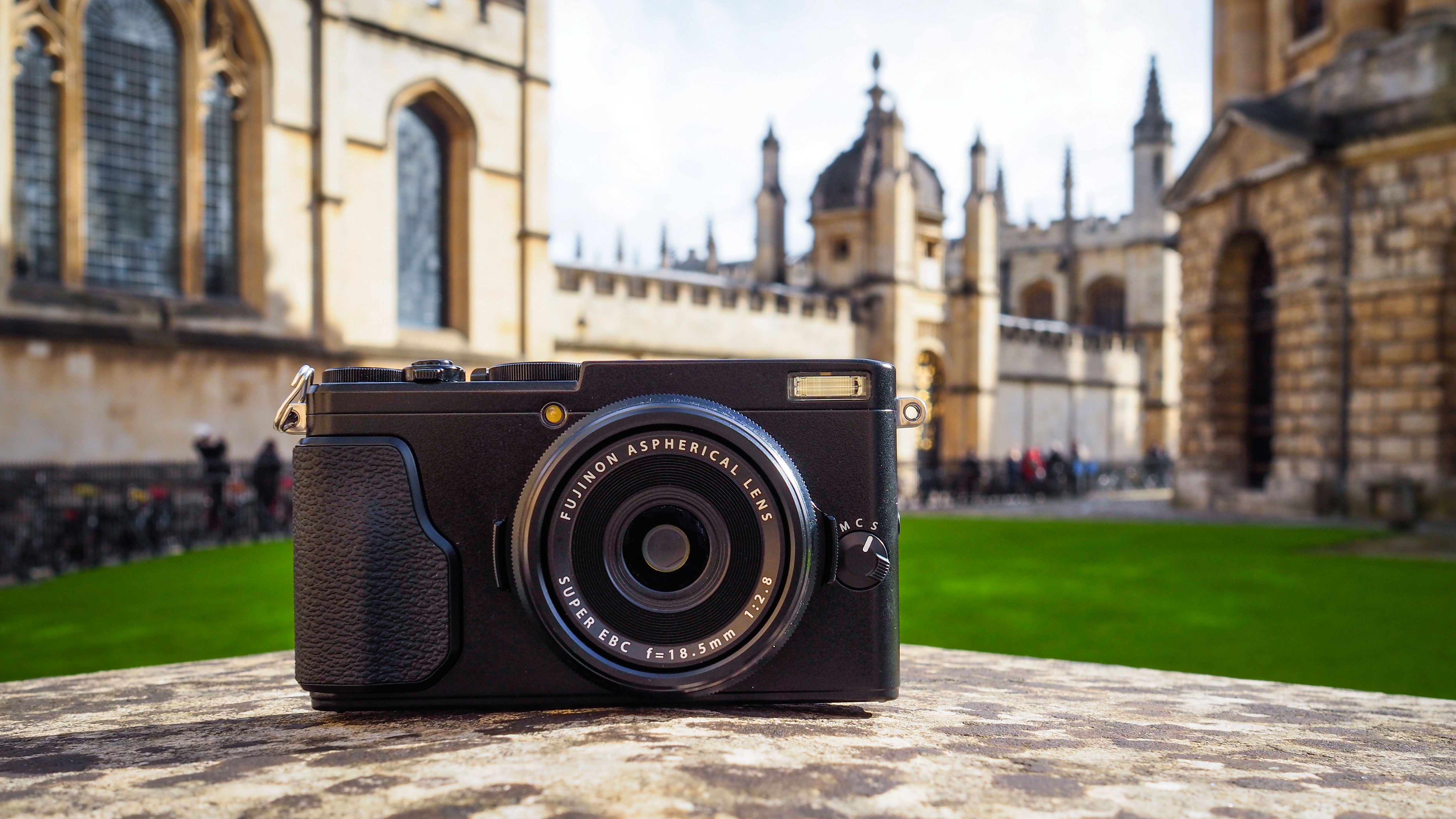Why you can trust TechRadar
We put cameras through a barrage of laboratory tests in order to check their performance. We also compare them to three leading rivals, and you can see the results in our table below.
The three rival cameras we've chosen are:
- Ricoh GR II: This diminutive Ricoh is often overlooked but delivers the same tempting proposition as the X70 – a fast, prime lens, an APS-C sensor and powerful manual controls.
- Fuji X100T: The X70's bigger brother has the same sensor specs, a hybrid viewfinder and a slightly longer focal length lens (35mm equivalent). It is a larger camera, though.
- Panasonic LX100: The LX100 has the same traditional external shutter speed and aperture controls, but uses a smaller Micro Four Thirds sensor. It does, however, have a zoom lens.
Our first set of charts is for resolution. This is measured using an industry-standard test chart shot in laboratory conditions across the camera's ISO range. We test both JPEG and raw files. The results are quoted in line widths/picture height, a standard method in the digital camera industry which works independently of sensor size.

JPEG resolution analysis: The X70 puts in a good performance here, beaten only by the bigger Fuji X100T and only at the lowest ISO settings. From ISO 200 onwards it's top of the leaderboard.

Raw (converted to TIFF) resolution analysis: The raw results tell a slightly different story, and here the Ricoh GR II comes to the fore. The X70 is not far behind, however.
